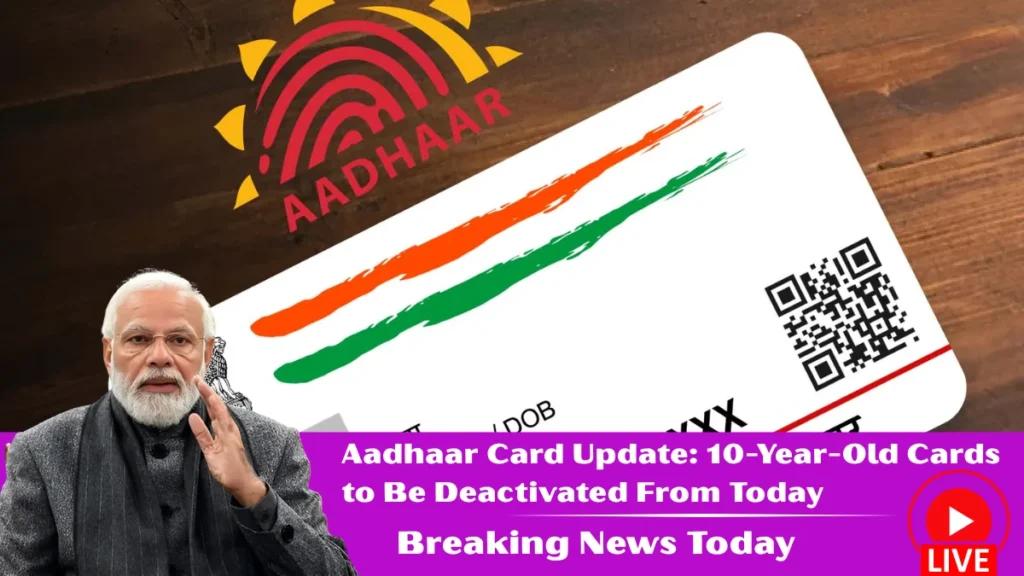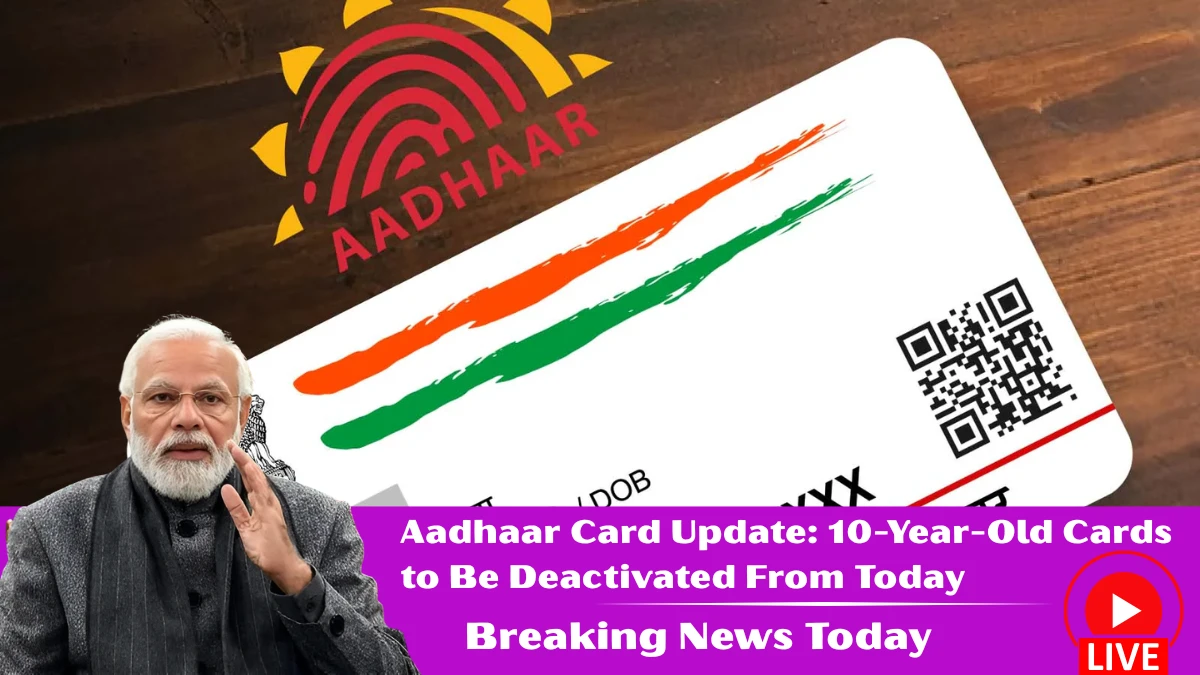Starting today, a significant update concerning Aadhaar cards has come into effect, impacting millions of Indian residents. Aadhaar cards that are more than 10 years old will be deactivated if they have not been updated.
This new rule aims to ensure that the database maintained by the Unique Identification Authority of India (UIDAI) remains accurate and up to date, preventing misuse and improving the delivery of services linked to Aadhaar.

Why Is This Aadhaar Card Update Happening?
The Aadhaar system, introduced in 2009, was designed to provide a unique identification number to every resident of India. Over time, the data collected needs to be refreshed to maintain accuracy, especially since biometric and demographic details can change or degrade in quality. After a decade, the likelihood of errors or outdated information increases, which could hinder identification processes and government service delivery.
UIDAI has stated that Aadhaar cards that have not undergone re-verification or updating within 10 years will be deactivated. This move will help to weed out inactive or potentially fraudulent accounts. The update is also a step towards enhancing security and privacy by reducing the risk of identity theft and duplication.
Who Is Affected by the Deactivation of Old Aadhaar Cards?
This update affects holders of Aadhaar cards issued more than 10 years ago who have not updated their information since. Many early adopters who registered in the initial years of Aadhaar enrollment might not have revisited their Aadhaar details for updates, such as changes in address, mobile number, or biometric data like fingerprints and iris scans.
If your Aadhaar card falls into this category, it is crucial to act immediately to avoid deactivation. Deactivation means your Aadhaar number will no longer be valid for authentication or verification, impacting your ability to access essential services such as banking, mobile connections, government subsidies, and more.
How to Check if Your Aadhaar Card Is at Risk of Deactivation
Checking whether your Aadhaar card is eligible for deactivation is a straightforward process. UIDAI provides an online portal where users can verify their Aadhaar status by entering their Aadhaar number. Notifications and alerts have also been sent out through SMS and email to those whose cards are likely to be affected.
Regular users can also visit their nearest Aadhaar Enrollment Center to get assistance in checking the status. It is advisable not to ignore any communication from UIDAI, as it might result in the deactivation of your card without further notice.
The Process of Updating Your Aadhaar Card
Updating Aadhaar details is now simpler and can be done both online and offline. For biometric updates such as fingerprints and iris scans, you will need to visit an Aadhaar Enrollment Center. Demographic details like name, date of birth, address, and phone number can be updated online through the UIDAI portal.
The process typically involves submitting valid documents as proof of identity or address and completing biometric authentication. Once the update request is submitted, it usually takes a few days to a few weeks for the changes to reflect in the Aadhaar database.
Importance of Keeping
Keeping your Aadhaar information current is essential for seamless access to various services. Many government schemes, subsidies, and welfare programs rely on Aadhaar authentication to verify beneficiaries. Banks and financial institutions use Aadhaar for KYC (Know Your Customer) verification, which is mandatory for many transactions.
An updated Aadhaar ensures that you do not face any disruptions in these services. Additionally, maintaining accurate biometric data prevents unauthorized access and protects your identity from fraudsters.
Your Aadhaar Card Gets Deactivated?
If your Aadhaar card is deactivated due to being outdated, it will lose its validity for any official verification process. This means you won’t be able to use it for banking transactions, applying for government benefits, or linking it to your PAN card for tax purposes.
Reactivating a deactivated Aadhaar card involves going through the update and verification process again, which can be time-consuming and inconvenient. Therefore, it is better to update your Aadhaar proactively before deactivation occurs.
Common Challenges
One of the main challenges many face is the lack of awareness about the update requirements. UIDAI has been conducting awareness campaigns, but some cardholders still remain uninformed, especially in rural areas.
Another challenge is the difficulty in accessing enrollment centers due to distance or mobility issues. In such cases, arranging assistance from family members or local officials can help.
Technical issues on the online portal, such as server downtime or document upload errors, may also pose obstacles. Patience and retrying at off-peak hours often resolve these problems.
Role of Technology
Technology has played a crucial role in making the Aadhaar update process accessible and efficient. The UIDAI portal allows users to update demographic information online, eliminating the need for physical visits in many cases.
Mobile applications and biometric devices used at enrollment centers facilitate smooth and quick data capture. Additionally, SMS alerts and email notifications ensure that Aadhaar holders are reminded about the update deadlines, helping to reduce the number of deactivated cards.
Impact of Aadhaar Card Deactivation on Society
This update will have a far-reaching impact on how identification is managed in India. By ensuring that the Aadhaar database is accurate and current, the government can better target social welfare schemes, reducing leakages and fraud.
For individuals, it means better security of their personal data and a smoother experience in accessing services. However, it also places responsibility on citizens to stay vigilant and ensure their details are regularly updated.
The deactivation of dormant or outdated Aadhaar cards will lead to a more streamlined and trustworthy identification system, which is crucial in a digital and cashless economy.
Final Thoughts on the Aadhaar Update and Its Importance
The deactivation of 10-year-old Aadhaar cards that have not been updated is a significant step towards improving the integrity of India’s identification system. While it may cause some inconvenience initially, the long-term benefits of enhanced security, reduced fraud, and better service delivery are undeniable.
If you have an Aadhaar card issued over a decade ago, now is the time to check its status and update your information if needed. Staying proactive will ensure you continue to enjoy the benefits linked to Aadhaar without interruption.
Remember, an updated Aadhaar is not just a card; it is a gateway to numerous essential services, financial inclusion, and social security. Don’t wait until it’s too late take action today.
Disclaimer: This blog is for informational purposes only and does not constitute legal or official advice. Please verify details with UIDAI.
